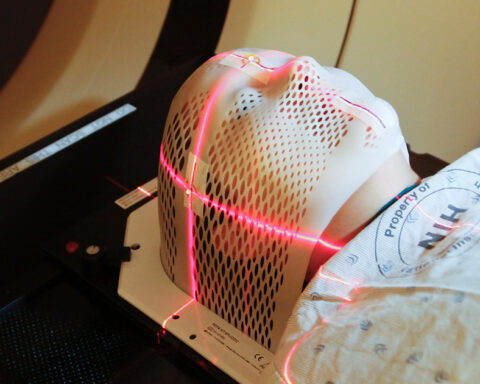A mesothelioma biopsy is an essential part of the diagnosis and management of this treatment. We’ll give you a patient manual for the mesothelioma biopsy procedure in this article to assist you.
Introduction:
Mesothelioma is an uncommon but fatal kind of cancer brought on by asbestos exposure. Early diagnosis of mesothelioma is challenging since its symptoms can be misdiagnosed as lung cancer or pneumonia. A mesothelioma biopsy is a medical procedure performed to establish cancer’s stage and confirm the diagnosis of mesothelioma. This manual is intended to assist patients in comprehending the value of a mesothelioma biopsy, the various types of possible biopsies, and what to anticipate both during and after the procedure.

Understanding the importance of a mesothelioma biopsy:
A crucial step in the diagnosis and management of this treatment is a mesothelioma biopsy. The biopsy can assess cancer’s stage and confirm the presence of mesothelioma. This data is necessary for creating a treatment strategy that is suited to the requirements of every patient.
Different types of mesothelioma biopsies:
Mesothelioma biopsies come in a variety of forms, such as pleural biopsy, peritoneal biopsy, and thoracoscopy. Mesothelioma that affects the lining of the lungs or abdomen is diagnosed using peritoneal and pleural biopsies, respectively. A surgical procedure called thoracoscopy is utilized to take a biopsy of the pleura.
Preparing for a mesothelioma biopsy:
Your doctor will go over the procedure’s dangers and advantages before the biopsy. To establish if a biopsy is right for you, you will also need to provide a medical history and undertake another testing, like imaging studies.
The procedure:
A tiny sample of tissue will be removed from the afflicted area during the biopsy. The sample will be examined under a microscope to see whether mesothelioma is present. You can receive a sedative to help you unwind or a local anesthetic during the surgery.
Risks and complications:
A mesothelioma biopsy has dangers, just like any other medical procedure. These include discomfort, bleeding, and infection. A pneumothorax, a condition in which air leaks into the gap between the lung and the chest wall, may occasionally be brought on by the biopsy.
Recovery:
You will be transferred to a recovery area after the biopsy, where you will be kept under observation for a short while. Your doctor will give you information on how to care for yourself at home if you suffer any pain or discomfort at the biopsy site.
Understanding the biopsy results:
Following the biopsy, your doctor will examine the sample and inform you of the findings. If the biopsy confirms the presence of mesothelioma, further testing will be done to determine the stage of cancer.
Imaging studies:
A mesothelioma biopsy is frequently combined with imaging tests to provide a more comprehensive view of cancer. These tests include computed tomography (CT) scans and magnetic resonance imaging (MRI). These investigations can assist in figuring out the tumor’s size, location, and whether it has spread to other areas of the body.
Staging:
Cancer will be staged after a mesothelioma diagnosis is made. Cancer’s stage is a gauge of how far along it is and aids in choosing the most effective course of treatment. Mesothelioma has four stages: stage 1, stage 2, stage 3, and stage 4.
Treatment options:
According to the cancer’s stage and the patient’s general health, there are many mesothelioma treatment options. Surgery, radiation therapy, chemotherapy, and immunotherapy are all available as treatment options. Together, you and your doctor will create a treatment strategy that is specifically catered to your requirements.
Clinical trials:
Clinical trials are research projects carried out to examine potential mesothelioma therapies. Patients may be able to acquire novel therapies through these trials that are not yet accessible to the general public. Your doctor can give you additional details about clinical trials if you’re interested in taking part and assist you in deciding whether they’re right for you.
Coping with mesothelioma:
It can be frightening and challenging to deal with receiving a mesothelioma diagnosis. It’s critical to look after your bodily and emotional needs. Support groups, counseling, and other tools can be beneficial in minimizing the disease’s emotional effects.
Legal options:
You might be entitled to compensation if mesothelioma has been detected in you. Many businesses that produced asbestos-containing products and used them in their products have established trust funds to provide compensation to those who have been harmed by the disease. Your legal options and the procedure can be explained to you by a lawyer with experience in mesothelioma cases.
Advanced treatment options:
There have been improvements in mesothelioma treatment options recently. These include novel medications and immunotherapies, as well as novel surgical procedures including extrapleural pneumonectomy and pleurectomy/decortication. These therapies are still regarded as experimental, and not all cancer treatment facilities might offer them.
Conclusion:
A crucial step in the diagnosis and management of this treatment is a mesothelioma biopsy. Patients should be aware of the value of the biopsy, the various types of biopsies available, and what to anticipate both during and after the surgery. Early diagnosis and appropriate treatment can significantly increase the patient’s chances of survival thanks to the development of treatment options. To create a specific treatment plan, patients should work together with their medical team and take into account all available possibilities, such as clinical trials and legal options.






